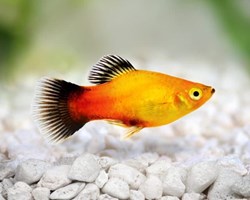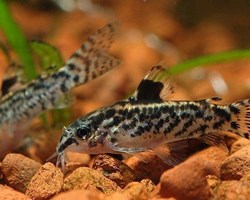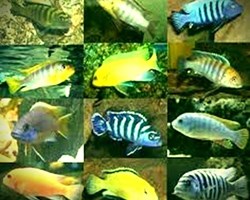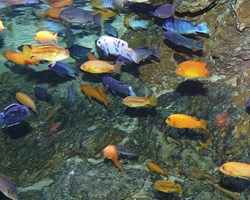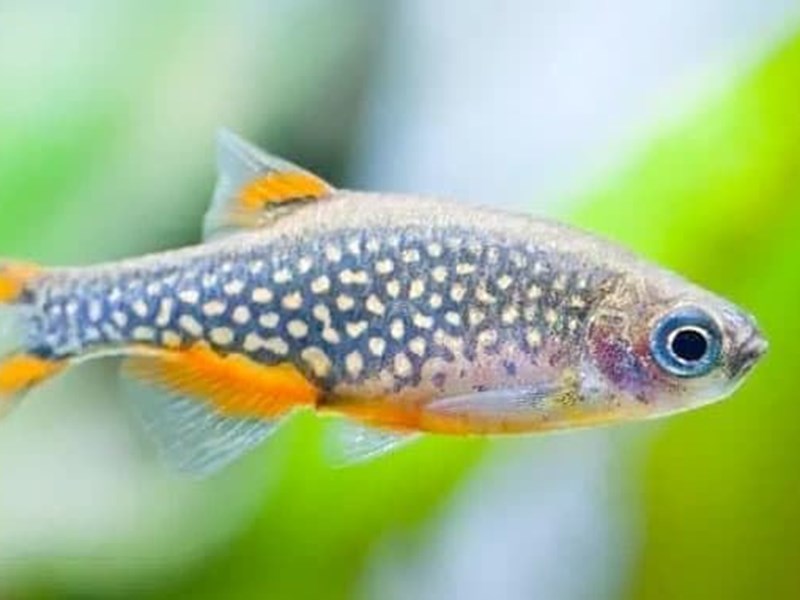
Scientific name: Danio margaritatus, formerly Celestichthys margaritatus
Common Name: Galaxy Rasbora, Galaxy Microrasbora, Celestial Pearl Danio
Aquarium size: Minimum 30 liters
Temperament: Calm
Temperature: Between 22º and 28ºC
pH: Between 6 and 7.5
Diet: Omnivores
Length: Between 1 and 1.5 centimeters.
DESCRIPTION:
The Rasbora galaxy fish or microrasbora galaxy is scientifically known as Danio Margaritatus, it is a small fish that belongs to the Cyprinidae (Cyprinidae) family.
It is called like this because its skin has an attractive color similar to the stars that we can see in the sky.
They are well suited to aquariums filled with vegetation and other fish that mimic their peaceful nature.
It is true that these fish are shy, although they work perfectly in communities if they live with a good school of the same species.
Its name is due to the fact that its skin has an attractive design that resembles stars in a distant galaxy.
It is an endemic species of Inle Lake, in Myanmar (former Burma). This is a lake intended for cattle grazing, it is located at 884 meters high and is between 2.10 and 3.6 meters deep.
It has several canals with gates that are used for irrigation and water for livestock.
The Rasbora Galaxy is a relatively new species, as it was only discovered in mid-2006, which makes it a recent species in the aquarium hobby.
His discovery was published in the English magazine "Practical Fishkeeping" and quickly became a sensation in the United States and Europe.
The Celestial Pearl Danio, also commonly called Rasbora Galaxy, rocked the aquarium world when they were discovered in 2006.
The vibrant colors and peaceful nature make this fish extremely popular.
Scientifically known as Danio margaritatus, this fish is a member of the Cyprinidae family.
It is a fish dependent on plants since it lives much more calmly if it has them, it adds a touch of color and lively activity to any aquarium.
Normally, the life expectancy of the Celestial Pearl Danio is 3 to 5 years in stable aquariums.
Despite their small size, they can help liven up any planted aquarium.
They get along with a wide range of other fish, although they are somewhat shy.
They will be constantly on the move and exploring the lower parts of the aquarium.
Due to their small size and shy nature, they need to be kept in a school of fish that mirror their behavior and size.
If not, they can easily be prey or competitors to larger fish.
Beginners looking to keep a school of Galaxy Rasboras should consider their behavior and habitat above all else.
A group of these fish can add both color and energy to any plant background given to them.
The white dotted bodies combined with their red or orange fins allow the fish to stand out among its habitat.
These fish are small, at most they measure 3 cm from head to tail.
The most characteristic part of these fish is the coloration of the fins.
All fins have two black lines parallel to the bright red or orange color, depending on the sex.
When observing a group of these Danios, you will probably notice the difference in coloration between individuals.
This is because they are sexually dimorphic; males and females look different.
Males are slender and often more vibrantly colored, especially on the tail, while females are slightly duller and rounder in shape.
Courtship males even gain additional deep red coloration on their stomachs.
This coloration can lead people to seek only males for their aquarium; Unfortunately, maintaining a male to female ratio is important to maintaining a healthy group.
Males will constantly fight each other for a mate, so having more females for each male will reduce the risk of fighting.
Because they are such a new species, research on where they fit into the genus Cyprinidae continues to this day.
They share their general shape with other members of their family and even have the speckled pattern of other danio fish such as the dwarf danio (Danio nigrofasciatus).
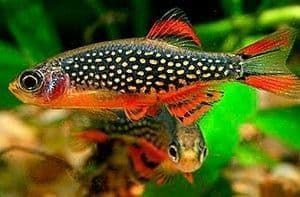
MORPHOLOGY:
These are its main physical and morphological characteristics of the Danio Margaritatus:
Size: It has small dimensions, is elongated and ellipsoidal in shape, and reaches a maximum length of 1.5 centimeters in adulthood.
Head: It is flat on the sides, and the body of the fish is short and plump.
Fins: The dorsal and anal fins are very symmetrical, set back somewhat on the body. They are transparent, with horizontal orange stripes, crossed by other narrower black and blue stripes.
Color: The body is metallic blue, which is dotted with white or yellow spots, resembling a starry sky. The colors vary in intensity depending on your mood, light intensity and water quality.
Sexual Dimorphism:
It is very easy to differentiate the sex when they are in good health.
The females tend to be slightly larger than the males and have a more rounded body shape, especially when they are going to spawn, as they have a more bulging belly, a greenish-blue coloration, and the spots on the body are dark red. cream to gold and do not extend into the front of the abdomen.
The males have more intense colors, with the body color of a deep metallic blue, the bands and stripes are very intense reddish orange.
The spots on the body are pearly white.
Males have reddish pelvic fins with two black stripes, while females may have one black stripe, but not two as in the case of males.
The freshwater galaxy rasbora fish found in small, highly vegetated shallow ponds in Southeast Asia (Myanmar).
These ponds have relatively low water movement with high light levels.
The light generates a lot of vegetation and algae for them to hide and feed on.
In the wild, this fish survives best when surrounded by high levels of live vegetation and other hiding areas in rock or driftwood.
It is also important to note that there is still much to discover about their habitat and the species in general.
The fact that it was discovered in 2006 means that new discoveries are likely to be made.
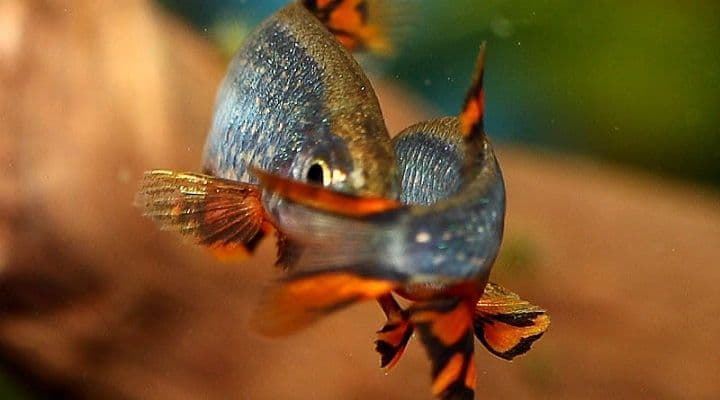
DISTRIBUTION AND HABITAT:
They are endemic to Inle Lake located in the Shan State of northern Myanmar (former Burma).
AQUARIUM CONDITIONS:
Due to its small size, it can be safely kept in a small aquarium or nanoaquarium, as long as we keep the Rasbora Galaxy away from larger fish that may see it as prey.
The experiences of breeders and lovers of aquarium fish indicate that they prefer well-oxygenated or running water in well-planted aquariums.
In order to replicate their natural environment within your aquarium, you will need to include plenty of plants, buried in a dark substrate.
Because their natural home is mainly small ponds, they are used to a wide variety of aquatic plants.
These plants not only help keep the tank clean, but also allow the fish to hide and even lay eggs.
These hiding places will become more and more important as the number of males in the tank increases.
Males compete for mates constantly, so with no places to hide, losing males are subject to extreme harassment often leading to injury and sometimes death.
You should also include lots of rocks and wood to mimic your natural surroundings.
The ideal temperature for these fish is around 22-26°C.
The preferred pH is between 6.5 and 7.5.
It is necessary to keep the hardness at a soft to medium level.
These levels are a bit wide due to the toughness of these fish.
What is important, however, is to make sure that these fish are kept in stable water conditions.
They do not need a flow of water, as they are used to slow moving, or calm waters.
As for lighting, keep it moderate to high.
SIZE OF AQUARIUMS FOR GALAXY RASBORAS:
When keeping galaxy rasboras in an aquarium, nothing below 40 liters should be used.
Keeping 5 or 6 individuals, mostly females if possible, is the best way to go given their grouping nature.
If you want to increase the number of them in the tank, then you will need a larger tank.
Aim for about 7 liters per fish.
Also try to keep the tank relatively shallow.
This will mimic the shallow nature of its natal home and make the fish more comfortable.
The ideal aquarium should have a minimum capacity of 50 liters, although they can live alone in a 20-liter aquarium.
The recommended thing is a minimum of 30 liters to place a school of 10 specimens, as well as an aquarium with many plants so that they can hide, since they are usually shy and skittish.
The water parameters should be the following:
Temperature from 22 to 28°C
pH: 6 to 7.5
gH: 3rd-6th.
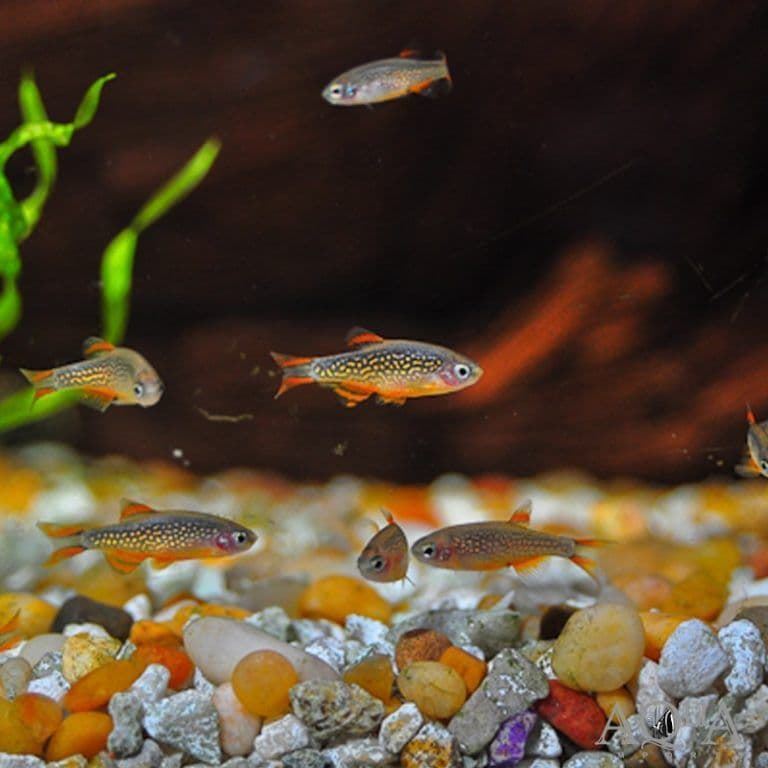
RASBORA GALAXY FISH NUTRITION:
It is an omnivorous fish and in its habitat it feeds mainly on small invertebrates, algae and zooplankton.
If in an aquarium it may eat dry small fish food in flakes or flakes.
Small live animals such as daphnia, newly hatched brine shrimp and microworms from oats also serve as food.
In their natural habitat, these fish eat many species of algae, plants, and zooplankton.
They are also known to eat small invertebrates and worms.
These fish are mostly opportunistic, which is why their diet is so varied.
In an aquarium, these fish will eat dry food like flakes and pellets as long as it is small enough to fit in their mouth.
Feeding can be problematic if they are too scared to eat.
These fish will most likely stay in the bottom half of the tank, so use sinking pellets.
Another option for feeding is to use small live or frozen foods like brine shrimp or krill.
The krill will especially help with the red coloration of the fins.
White worms are a good low cost alternative.
Live Daphnia, ground worms and moinas are good food for these small fish and help enrich their diet.
Always remember that you have to change the food they eat. Try not to feed them just one type of food, just pellets.
This will keep them healthy and even more vibrant as long as they are eating the right kind of food.
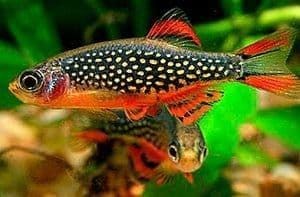
BEHAVIOR AND COMPATIBILITY:
It is a very peaceful, active and somewhat skittish fish.
It lives in schools, so if it is kept in aquariums, the ideal is to have a minimum of 6 specimens and a maximum of 10, depending on the size of the aquarium.
Males can be a bit territorial with each other during spawning.
Due to the shy nature of these fish it is important to keep them around other species of the same size and nature. This will prevent the galaxy danio from being eaten by larger fish or out-competed by faster, more aggressive fish.
They can be shy but that doesn't mean they aren't peaceful and do well in small communities – Tetras, Guppies, Corydoras and Killis are the perfect tank mates for them.
All of these fish are relatively peaceful and will complement the shy nature of the galaxy rasbora.
A great example of a complementing fish is the Neon Tetra.
They tend to stay towards the surface and bring a nice vibrant color to the community.
With Tetras at the top all areas of the water column will be full of fish.
Fish from the same species or area also make great tank mates since most of them share the same general behavior.
Note that these fish are known to attack and eat juvenile shrimp.
If you have larger adult shrimp, you don't need to worry.
Once the shrimp become adults, they are not normally eaten.
If several species of fish are being grouped together, more liters of water per fish are needed.
Keep this in mind if you have a smaller aquarium.
Galaxy Micro Rasboras work well with dozens of types of fish as long as they are peaceful in nature.
That's why these fish make amazing additions to quiet community aquariums.
Aggressive fish like cichlids, Oscars, or Jack Dempseys feed on fish that are slower and smaller than themselves, so you should avoid them.
Celestial Pearl Danio lives in groups, so you should try to keep a group of 5 or 6; this will help keep them all healthy and active.
As said before, do not lose sight of the number of males you have in your aquarium if it is small.
In a small tank with few hiding places, males that are less dominant will be subject to attack by other males.
To keep all individuals safe, make sure you have enough room for the fish to live and maintain a healthy male-to-female ratio.
Including lots of plants will give them a natural feel and also give the males a good hiding place when they compete for females.
Their best companions are usually aquarium shrimp, small snails, American cichlids and small fish.
The fish compatible with rasbora galaxy are:
- Ax Fish.
- Zebra fish.
- Apple Snail.
- Platy.
- Tetra Neon.
- Nun.
- Harlequin fish.
- female betta.
- Molly.
- Boraras.
- Ancistrus.
- Cherry Barbel.
- Kribensis.
- Guppies.
- Corydora.
- Tiger Barb.
- Chinese neon.
- Ax Fish.
- Otocinclus.
- Guppy Endler.
- drunk.
Fish compatible with restrictions:
- Killis.
- male betta.
- Ramirezi.
- Eat Siamese algae.
- Disk.
- Rainbow.
REPRODUCTION OF THE RASBORA GALAXY FISH:
It is preferable that in the breeding tank there are more females than males to reduce fighting and stress, preferably with a lot of vegetation or java moss for spawning.
The ideal ratio is 1 male for every 3 females.
After spawning, it is advisable to remove the vegetation and moss with the eggs to an aquarium-laying cage, prepared for such a function.
Hatching will occur in 3 or 4 days.
4 days later, the fry will consume the yolk sac and start swimming.
From this moment they will be fed 3 to 4 times a day, with very small food, between 5 and 50 microns in diameter. Later they will be supplied with artemia nauplii.
Breeding is quite simple.
Look for female fish that are darker in color and have a rounder abdomen.
This means that it is ready for spawning.
The use of live food has been observed to stimulate spawning in some cases due to their natural habitat.
Danios galaxy are egg layers, they will lay their eggs somewhere with less water movement but they can spawn anywhere.
Females can lay up to 30 eggs at a time; you are more likely to get groups of around 12.
The eggs will incubate for 2-4 days, after which they will enter their larval stage and start swimming.
If they spot the eggs early, it is imperative that they be removed and added to a breeding tank.
The males will search for the eggs and eat them constantly.
The breeding tank should be set up similar to the main tank with vegetation and low to medium water movement.
Start by feeding them microfoods for the first week.
After that they can be passed on to the baby brine shrimp until they grow into adults.
Growth is rapid, since the fry acquire the coloration and size of adults in the first year.
CARE OF THE RASBORA GALAXY:
As with most fish, it is important to keep a close eye on these fish early on.
One thing to pay attention to is the courtship of females by males.
Much of the time males spend is courting females.
This leads the males to fight over their potential mates.
An easy way to tell if a fish is fighting is with broken fins and other signs of bite marks on its sides.
Not only is male fighting directly bad for the loser, but fin damage can lead to fin rot.
Fin rot is very common in aquarium fish and can be caused by poor water quality and, yes, previously damaged fins.
But luckily there are many ways to cure and prevent this from happening.
If you see a fish that has this disease make sure to increase the amount of water changes you are doing.
Always make sure to monitor the pH and temperature of the aquarium water.
If these are not in the ideal range it can cause stress to the fish, leading to fin rot.
While it is true that they will group together a good deal of the time, Danios galaxy groups will separate, especially after learning about their new home.
If we look at a true schooling species like the Neon Tetra, we can see the difference in the behavior of the schools.
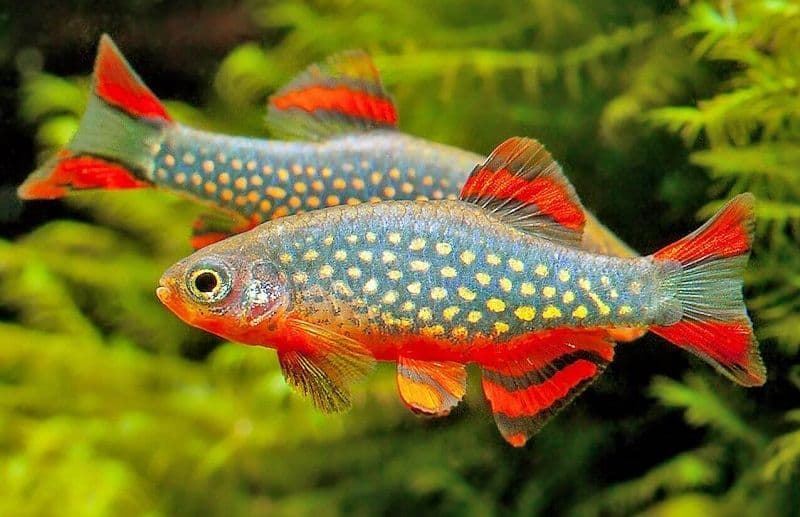
ADVICE:
If you are considering the Rasbora Galaxy for your aquarium, you will be making a great choice, which will give your collection a lot of showiness and originality.
It is very easy to keep, and it is one of the most beautiful fish we can get.

